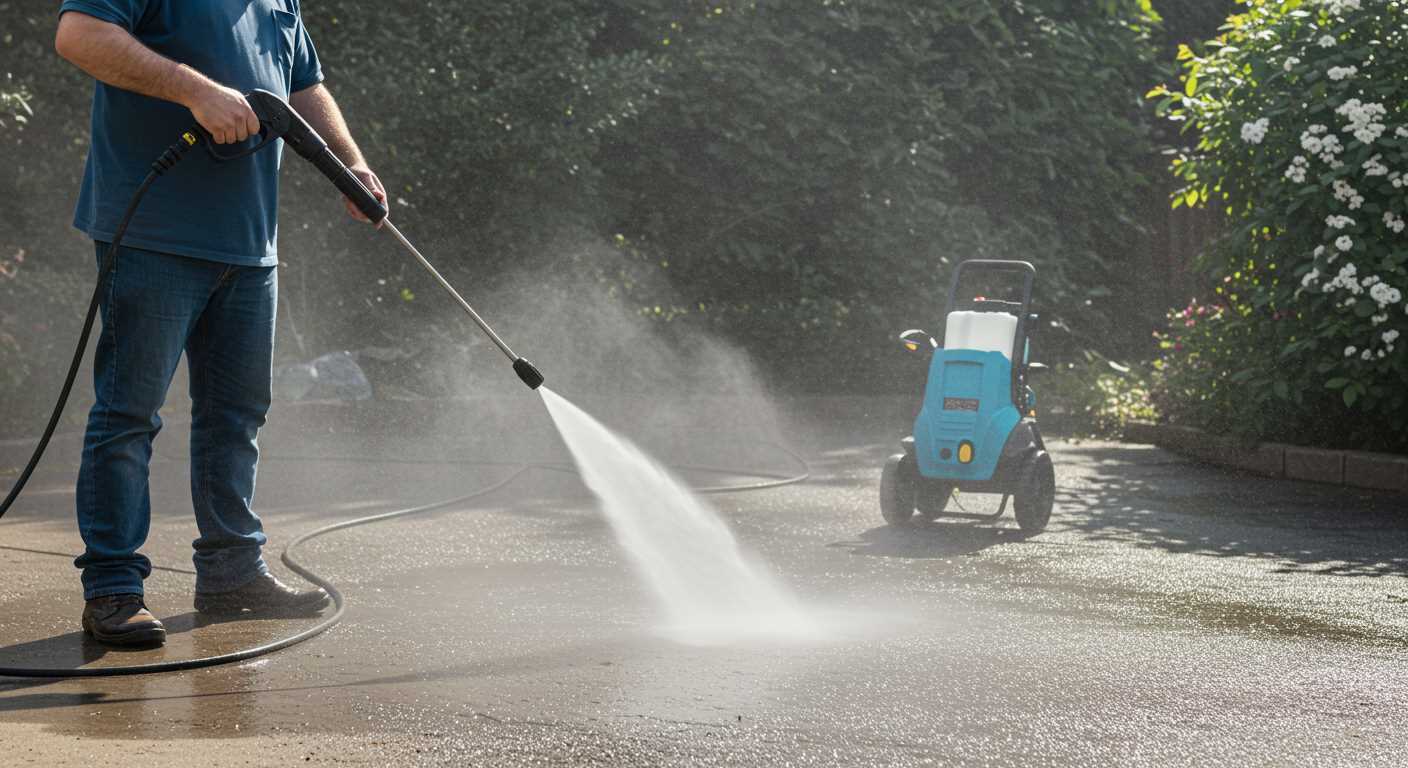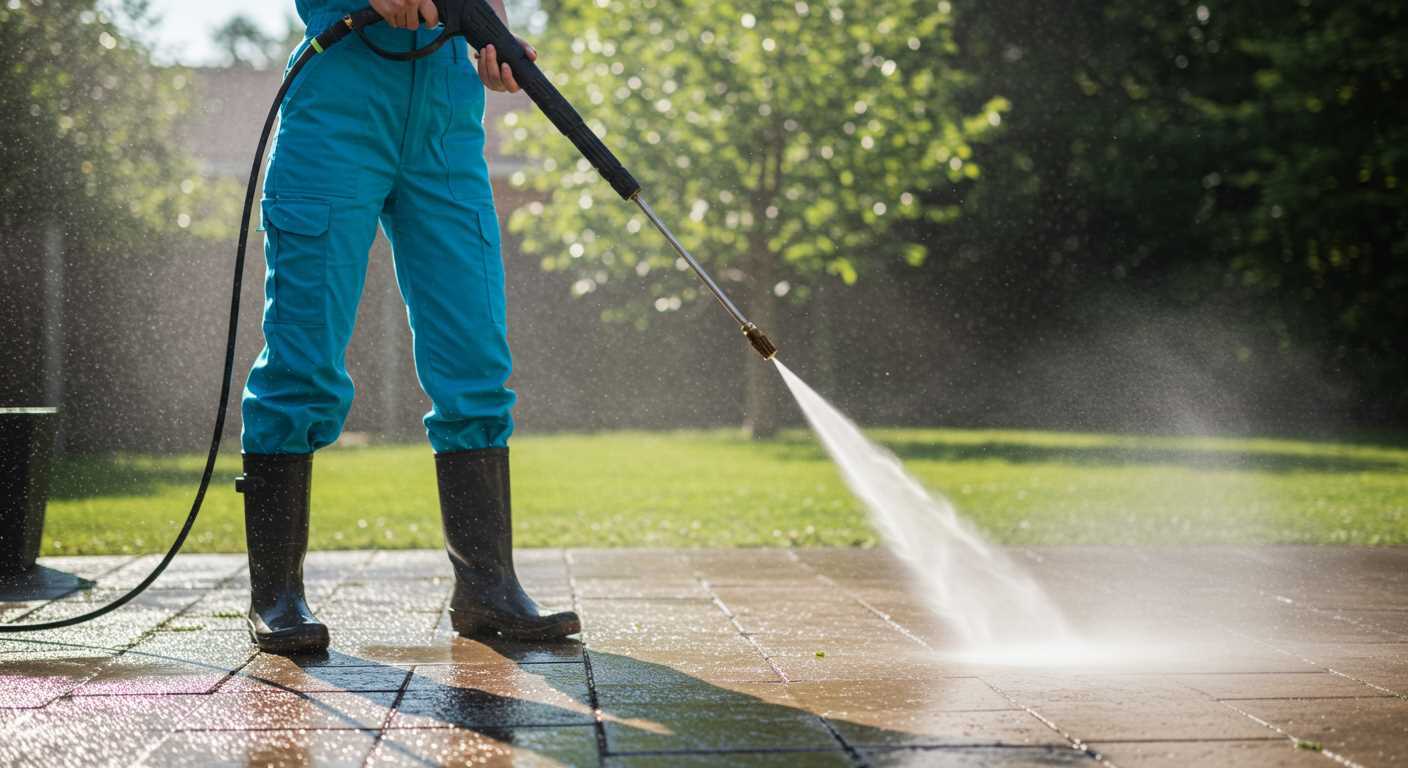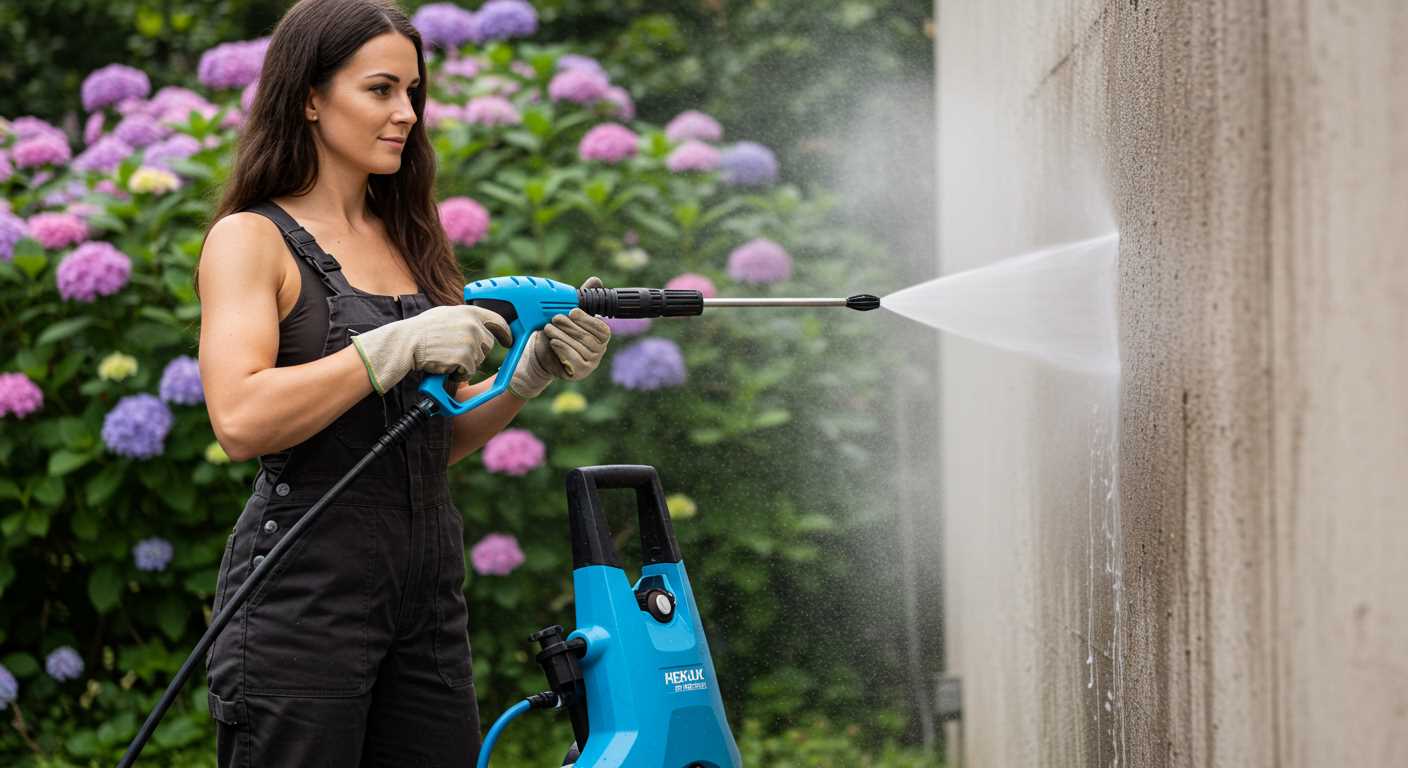



.jpg)
Yes, a high-pressure cleaner can be attached to a standard domestic water supply, provided you have the correct fittings. Many models are designed with adapters that allow for easy connection to a variety of outlets, including those commonly found in kitchens. It’s crucial to check the specifications of your equipment to ensure compatibility.
In my experience, the most common issue arises from mismatched thread sizes. Always verify whether your appliance requires a male or female connector and adjust accordingly. I recall a time when I overlooked this detail, leading to a frustrating delay in my cleaning project. A quick trip to the local hardware store for the right adapter solved the problem.
Additionally, consider the water pressure and flow rate in your home. Most domestic supplies can handle the demands of a high-pressure cleaner, but if you’re working with particularly low water pressure, you may encounter performance issues. I’ve found that using a pressure gauge can help monitor these factors and ensure optimal functioning during use.
Lastly, keep in mind the length of your hose and the distance from the supply source. A longer hose may lead to a drop in water pressure, which could affect the cleaning efficiency. I often recommend testing the setup briefly before starting a larger task to ensure everything operates smoothly.
Understanding the Connection Types of Cleaning Equipment
For seamless operation, knowing the connection types of cleaning devices is paramount. From my years of experience, I can tell you that most units utilise standard garden hose fittings, which typically measure ¾ inches in diameter. This size is prevalent across various models, making compatibility with outdoor spigots straightforward.
Some models, however, may come with different connectors, requiring adaptors for a proper fit. For instance, if you encounter a quick-connect system, it’s designed for easy attachment and detachment, allowing for swift changes between accessories. My advice is to keep a set of adaptors handy for those unexpected scenarios.
Another type I’ve come across frequently is the threaded connection. This involves screwing the hose directly onto the spout. While this provides a secure fit, it can be a nuisance if you’re frequently switching between devices. A simple solution I’ve found is to invest in a swivel adaptor; it helps reduce strain on the hose and prevents tangling.
It’s also worth noting that some advanced models may feature proprietary connections. These are designed for specific brands and often require the manufacturer’s accessories. Always check the product specifications before making a purchase to avoid compatibility issues.
In my experience, understanding these connection types can save you time and frustration. Whether you’re washing a vehicle or cleaning outdoor furniture, ensuring you have the right setup will lead to a much more enjoyable experience.
Assessing Your Tap Compatibility with High-Pressure Cleaners
Before attempting to connect your high-powered cleaning device to your sink’s water source, check the specifications of both the tap and the cleaner. It’s crucial to ensure they can work together seamlessly.
First, examine the thread size of your sink fixture. Most domestic taps have either a ½-inch or ¾-inch thread. Measure the diameter of the thread to avoid any mismatches. This step can save you from unnecessary frustration during setup.
Next, consider the water flow rate. High-powered devices require a certain minimum flow rate to operate effectively. Most models need at least 5 litres per minute. Verify the flow rate of your tap; you can do this by filling a container of known volume and timing how long it takes to fill. If your tap struggles to meet this requirement, you may need to explore alternative water sources.
Also, pay attention to the water pressure from your tap. Ideally, it should be between 1 and 10 bar. Some cleaning devices have specific requirements for optimal performance. If your tap pressure is too low, the cleaner may not function correctly.
Lastly, be aware of the connector types. Many high-powered cleaners come with adapters for various fittings, but not all adaptors are universal. Check if your device includes the necessary fittings for your tap. If not, you may need to purchase a compatible adapter.
| Specification | Details |
|---|---|
| Thread Size | ½-inch or ¾-inch |
| Minimum Flow Rate | 5 litres per minute |
| Optimal Water Pressure | 1-10 bar |
| Connector Types | Check for compatible fittings |
By taking these steps, you’ll ensure a hassle-free connection and maximise the efficiency of your cleaning tasks. I’ve seen too many people jump in without checking these details, only to encounter problems later. A little preparation goes a long way!
Required adapters for connecting a high-pressure cleaner to a faucet
To successfully link a high-pressure cleaner to a standard faucet, you’ll need specific adapters. These fittings ensure a secure connection and prevent leaks during operation. Here are the crucial components you should consider:
Common Adapter Types
- Quick Connect Adapter: This is the most popular option. It allows for easy attachment and detachment, making setup a breeze.
- Garden Hose Adapter: If your faucet has a threaded spout, a garden hose adapter can be used. It connects the cleaner’s hose directly to the faucet.
- Universal Tap Connector: These connectors are designed to fit various tap sizes and can accommodate different hose diameters.
Checking Compatibility
- Measure your faucet’s outlet diameter. Most adapters are available in standard sizes, but knowing your exact measurement will help.
- Examine the threads on your faucet. Some fittings are designed for smooth spouts, while others require threaded connections.
- Consider the type of hose your cleaner uses. Ensure the adapter can accommodate both the faucet and the hose’s specifications.
For those who need a reliable unit for tough jobs, consider a pressure washer for brick house. If you’re looking to clean your vehicle, pairing your device with the best car wash soap for pressure washer jeep jl will yield excellent results.
Potential limitations of using a kitchen tap for pressure washing

Relying on a home faucet for high-intensity cleaning can present several challenges. First, the water flow rate from standard domestic supplies often falls short of the requirements for optimal performance. In my experience, many taps deliver around 8 to 10 litres per minute, which is insufficient for machines designed to function with higher volumes.
Next, the pressure generated by household fixtures is typically lower than what is needed for effective cleaning. This can lead to unsatisfactory results, especially when tackling tough grime or large surfaces. I recall a time when I attempted to clean a driveway using a standard supply; the lack of adequate force left behind stubborn stains that required additional effort to remove.
Compatibility issues may arise as well. Not all fixtures are constructed to handle the demands of high-performance cleaning devices, which can lead to leaks or potential damage. I once witnessed a friend’s connection fail during use, resulting in a considerable mess and the need for repairs.
Also, consider the noise factor. Devices designed for robust cleaning often operate at higher decibels, which can be disruptive in residential areas. I’ve had to adjust my cleaning schedule to avoid early mornings or late evenings to respect neighbours’ peace.
Finally, portability can be hindered if your setup is limited to a stationary fixture. This can restrict your cleaning range, making it difficult to reach all areas without moving the equipment or the water source itself.
Alternative Water Sources for High-Pressure Cleaners
Using a traditional water supply isn’t the only option for supplying your high-pressure cleaning device. I’ve had success with several alternative sources that can provide adequate pressure and flow for cleaning tasks.
Rainwater Harvesting Systems
Implementing a rainwater collection system can be a sustainable choice. By installing a barrel or tank to gather rainwater, you ensure a constant supply without tapping into the mains. Make sure to install a first-flush diverter to keep debris out of your collection. The water quality is generally good for cleaning, just remember to periodically check for contaminants.
Water Butts and Storage Tanks
Another practical approach is to use a water butt or a larger storage tank. Connect your cleaning equipment directly to these tanks, ensuring you have the necessary fittings for a secure connection. These tanks can be filled from various sources, including hoses or rainwater, offering flexibility in your cleaning setup. Just ensure that the outlet is high enough to provide the required suction for your machine.
Utilising these alternative sources not only aids in efficient cleaning but also promotes environmental responsibility. Always check the compatibility of your equipment with the water source to avoid any operational issues.
Maintenance Tips for Pressure Cleaners After Using Kitchen Faucets
After utilising a home faucet for your cleaning tasks, follow these straightforward maintenance steps to ensure longevity and optimal performance of your equipment.
1. Clean the Inlet Filter
Check the inlet filter regularly. Sediment and debris can accumulate quickly, especially when drawing water from a domestic source. Remove the filter and rinse it under running water to eliminate any blockages.
2. Flush the System
Always flush out the system after each use. Run clean water through the unit for a few minutes to clear any remnants of soap or cleaning agents. This prevents build-up and potential damage.
3. Inspect Hoses and Connections
- Examine all hoses for any signs of wear or cracks.
- Ensure connections are secure and free from leaks.
- Replace any damaged parts immediately to avoid further complications.
4. Store Properly
When not in use, store your gear in a dry, sheltered area. Avoid leaving it exposed to extreme temperatures, as this can cause seals and plastic components to degrade.
5. Check for Scaling
If you notice any white mineral build-up, particularly after using hard water, consider descaling the system. Use a recommended descaling solution to maintain the integrity of internal components.
6. Regularly Inspect the Pump
- Look for signs of leakage around the pump area.
- Listen for unusual noises which could indicate a problem.
- Replace oil in the pump if applicable, following the manufacturer’s guidelines.
By adhering to these tips, you’ll ensure your equipment remains in top condition, ready for your next cleaning project. Regular maintenance not only prolongs its life but also enhances performance, making your tasks easier and more efficient.
FAQ:
Can I connect a pressure washer to my kitchen tap?
Yes, many pressure washers can be connected to a kitchen tap, but you need to ensure that the tap has the correct fittings. Most pressure washers come with adapters that can fit standard tap sizes. Check your pressure washer’s manual for specific requirements and compatibility with your tap.
What type of adapter do I need to fit a pressure washer to a kitchen tap?
The type of adapter required depends on both the pressure washer model and the size of your kitchen tap. Typically, you will need a connector that fits the tap’s thread size, which is often ¾ inch or ½ inch. Most pressure washers include a variety of adapters, so refer to the user manual for guidance on the specific adapter needed for your tap.
Are there any restrictions on using a pressure washer with a kitchen tap?
Yes, there may be restrictions based on water pressure and flow rate. Kitchen taps are designed for normal household use, and if the pressure washer demands higher flow rates or pressures, it may not operate effectively. It’s advisable to check the specifications of your pressure washer and compare them with your tap’s capabilities to avoid potential damage.
What should I do if my kitchen tap does not fit the pressure washer?
If your kitchen tap does not fit the pressure washer, you can purchase an appropriate adapter from a hardware store or online. Measure the tap’s thread size to ensure you buy the correct adapter. If you are unable to find a suitable solution, consider using a different water source, such as a garden hose connection, if available.
Can using a pressure washer with a kitchen tap cause any damage?
Using a pressure washer with a kitchen tap can potentially cause damage if the tap is not designed to handle the pressure washer’s water flow. Be cautious of leaks or pressure fluctuations that may strain the tap or plumbing. If you notice any issues, it’s wise to stop using the pressure washer and consult a plumber for advice.
Can I connect a pressure washer directly to my kitchen tap?
Yes, you can connect a pressure washer to your kitchen tap, but you need to ensure that you have the correct fittings. Most pressure washers come with an adapter that allows them to connect to standard garden taps. However, kitchen taps may require specific adapters or hoses to fit properly. It’s important to check the size and type of your kitchen tap before attempting to connect the pressure washer.
What should I consider before using a pressure washer with a kitchen tap?
Before using a pressure washer with a kitchen tap, you should consider the water flow rate and pressure of your tap. Kitchen taps typically have lower flow rates compared to garden taps, which can affect the performance of the pressure washer. Additionally, ensure that the tap can handle the water pressure without leaking. You may also want to check if using the pressure washer will void any warranties on your plumbing or the tap itself. Finally, be mindful of any potential splashes or mess that might occur when using the pressure washer indoors.

.jpg)



.jpg)


